Flowering Heart |
||||||||||||||||||||||||||||||||||||||||||||||||||||||||||||||||
 |
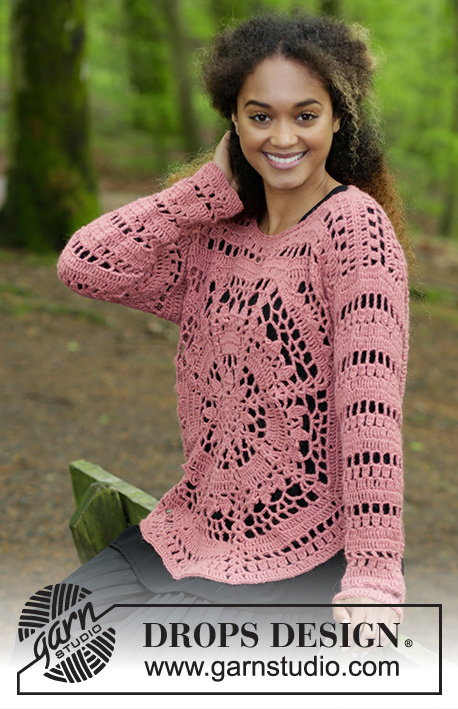 |
|||||||||||||||||||||||||||||||||||||||||||||||||||||||||||||||
Crocheted jumper with octagon and lace pattern. Sizes S - XXXL. The piece is worked in DROPS Puna or DROPS Sky.
DROPS 183-21 |
||||||||||||||||||||||||||||||||||||||||||||||||||||||||||||||||
|
INFORMATION FOR THE PATTERN: PATTERN: See diagrams A.1 to A.14. INCREASE TIP: Increase 1 double treble crochet by working 2 double treble crochets in same stitch. DECREASE TIP-1: Work 1 double treble crochet in each of the next 2 stitches, but wait with the last yarn over and pull through on both these double treble crochets, make a yarn over and pull it through all 3 loops on hook (= 1 double treble crochet decreased). DECREASE TIP-2: To work out how to decrease evenly, count the total number of double treble crochets on the round (e.g. 66 double treble crochets) and divide by the number of decreases to be made (e.g. 6) = 11. In this example, work every 10th and 11th double treble crochet together. ---------------------------------------------------------- FRONT PIECE: To start with, work an octagon for all sizes. Then work 2 corners on the shape so it is a hexagon. Then work an edge around the shape. Finally, work the shoulders and sleeves. OCTAGON: Start with hook size 4.5.mm and Puna and work pattern in the round according to diagram A.1 - REMEMBER THE CROCHET TENSION! When A.1 has been completed, the shape measures approx. 10 cm in diameter from side to side. Now continue in the round as follows: Work A.2b a total of 8 times on the round - diagram A.2a shows how the round starts and ends and is worked in addition to A.2b. When the whole of diagrams A.2a and A.2b have been worked in height, the shape measures approx. 44 cm in diameter from side to side. There are now 8 sides of 27 double treble crochets and 8 corners of 2 double treble crochets, 1 chain stitch and 2 double treble crochets. Cut and fasten the strand. CORNER: Work a corner on side-2 and a corner on side-8 - see sketch. Start with the corner on side-2 and work back and forth according to diagram A.3. The first row starts by the arrow - each row is fastened with 1 slip stitch in the stitches along side-2 as shown in diagram. When the whole of diagram A.3 has been completed, cut and fasten the strand. Work the other corner on side-8 in the same way, cut and fasten the strand. EDGE AROUND SHAPE: There are now 6 sides to the shape - see sketch. There are now 67 double treble crochets on side-1, 47 double treble crochets on sides-2/3 and sides-7/8, there are 27 double treble crochets on side-4, side-5 and side-6 and there are 6 corners of 2 double treble crochets, 1 chain stitch and 2 double treble crochets. READ THE WHOLE OF THE NEXT SECTION BEFORE CONTINUING! Start at the corner of side-2 and work pattern according to diagrams as follows: Work A.4a - shows how rounds start and end and is worked in addition, work A.4b around the corner, A.5 a total of 16 times in width, * A.6 around next corner, A.5 a total of 9 times in width *, repeat from *-* 2 more times, work A.6 around the next corner, A.5 a total of 16 times in width, A.7 around next corner, A.4b around the same corner, work A.5 a total of 23 times in width, finish with A.7. Increase on first round - READ INCREASE TIP - as follows (do not increase over corners): Side-1: increase 2 double treble crochets. Side-2/3: increase 1 double treble crochet. Side-7/8: increase 1 double treble crochet. When all of diagrams A.4 to A.7 have been completed in height, there are 77 double treble crochets on side-1, 56 double treble crochets on each of side-2/3 and side-7/8, there are 35 double treble crochets on each of side-4, side-5 and side-6, and there are 4 corners of 2 double treble crochets, 1 chain stitch and 2 double treble crochets and 2 corners of 2 tripple treble crochets, 1 chain stitch and 2 tripple treble crochets. DO NOT cut the strand! Now size S/M is finished. For sizes L/XL and XXL/XXXL continue as follows: Sizes L/XL - XXL/XXXL: READ THE WHOLE OF THE NEXT SECTION BEFORE CONTINUING! Work slip stitches as far as the corner and then continue as follows: Work A.4a - shows how the rounds start and end and is worked in addition, work A.4b around the corner, A.5 a total of 19 times in width, * A.6 around next corner, A.5 a total of 12 times in width *, repeat from *-* 2 more times, work A.6 around the same corner, A.5 a total of 19 times in width, A.7 around next corner, A.4b around the same corner, work A.5 a total of 26 times in width, finish with A.7. Increase/decrease on first round as follows (do not decrease over corners): Side-1: increase 1-1 double treble crochet. Side-2/3: increase 1-1 double treble crochet Side-4: decrease 2-2 double treble crochets - READ DECREASE TIP-1. Side-5: decrease 2-2 double treble crochets. Side-6: decrease 2-2 double treble crochets. Side 7/-8: increase 1-1 double treble crochet. When all of diagrams A.4 to A.7 have been completed in height, there are 86 double treble crochets on side-1, 65 double treble crochets on each of side-2/3 and side-7/8, there are 41 double treble crochets on each of side-4, side-5 and side-6, and there are 6 corners of 2 double treble crochets, 1 chain stitch and 2 double treble crochets. DO NOT cut the strand! Now size L/XL is finished (L/XL has 4 more rounds than S/M). For size XXL/XXXL continue as follows: Size XXL/XXXL: READ THE WHOLE OF THE NEXT SECTION BEFORE CONTINUING! Work slip stitches as far as the corner and then continue as follows: Work A.4a - shows how the rounds start and end and is worked in addition, work A.4b around the corner, A.5 a total of 22 times in width, * A.6 around the next corner, A.5 a total of 14 times in breadth *, repeat from *-* 2 more times, work A.6 around the next corner, A.5 a total of 22 times in width, A.7 around the next corner, A.4b around the same corner, work A.5 a total of 29 times in width, finish with A.7. Increase on the first round as follows (do not increase over corners): Increase 1 double treble crochet on each of the 6 sides. When all of A.4 to A.7 have been completed in height, there are 95 double treble crochets on side-1, 74 double treble crochets on each of side-2/3 and side-7/8, there are 50 double treble crochets on each of side-4, side-5 and side-6, and there are 6 corners of 2 double treble crochets, 1 chain stitch and 2 double treble crochets. DO NOT cut the strand! Now size XXL/XXXL is finished (XXL/XXXL has 8 rounds more than S/M). ALL SIZES - SHOULDER: Now work back and forth, only on side-1. Work the first shoulder starting from the wrong side as follows: Work slip stitches as far as the corner, turn and work diagram A.8 around the corner-space, A.9 a total of 6-7-8 times, finish with A.10 = towards neck. When all of diagrams A.8 to A.10 have been completed in height, cut and fasten the strand. The middle 19-22-25 double treble crochets on the edge of the shape = neck. Work the other shoulder, starting from the wrong side as follows: Work A.11 = towards neck, A.12 a total of 6-7-8 times and finish with A.13 around the corner. When all of diagrams A.11 to A.13 have been completed in height, cut and fasten the strand. BACK PIECE: Work in the same way as the front piece until you are about to start on the shoulders. Instead of working shoulder, work back and forth along the whole of side-1 = 81-90-99 double treble crochets (including double crochets in the corners) + 2 corner-spaces on the row. Work as follows starting from the wrong side: Work A.8 around the corner-space, A.9 a total of 27-30-33 times in width, finish with A.13 around corner-space. When all of diagrams A.8/A.9/A.13 have been completed in height, cut and fasten the strand. ASSEMBLY: Sew the shoulder seams - sew in the outermost loop of the outermost stitch. Sew the side seams as follows: Start in the corner between side-3 and side-4 and sew upwards until there is approx. 19-21-23 cm left before the shoulder = armhole. Start in the corner between side-6 and side-7 and sew upwards until there is approx. 19-21-23 cm left before the shoulder = armhole. NECKLINE: Work an edge around the neck. Start on one shoulder and work 1 double crochet, work * 3 chain stitches, skip approx. 1½ cm, work 1 double crochet *, repeat from *-* around the neck, finish with 3 chain stitches and 1 slip stitch in the first double crochet. SLEEVE: The piece is worked in the round from the armhole, starting mid under the armhole in the side. Start with hook size 4.5 mm and Puna and work 66-75-81 double treble crochets evenly spaced around the armhole (work in/around double treble crochet/chain-space). Then work as follows: Work pattern according to diagram A.14b a total of 22-25-27 times on the round - diagram A.14a shows how the rounds start and end and is worked in addition to A.14b. Then repeat A.14 in height and decrease evenly on the first round in the diagram - read DECREASE TIP-2, as follows: Decrease 6 double treble crochets 3-5-2 times and decrease 3-0-9 double treble crochets 2-0-2 times = 42-45-51 double treble crochets after the last decreases. When piece measures approx. 45-42-40 cm (shorter measurements in larger sizes because of broader shoulders) finish after the 1st or the 4th round in A.14. Cut and fasten the strand. Work 1 more sleeve in the same way. |
||||||||||||||||||||||||||||||||||||||||||||||||||||||||||||||||
Diagram explanations |
||||||||||||||||||||||||||||||||||||||||||||||||||||||||||||||||
|
||||||||||||||||||||||||||||||||||||||||||||||||||||||||||||||||

|
||||||||||||||||||||||||||||||||||||||||||||||||||||||||||||||||
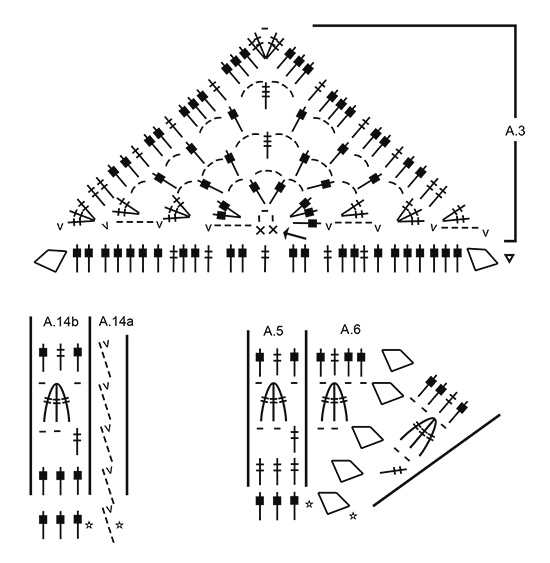
|
||||||||||||||||||||||||||||||||||||||||||||||||||||||||||||||||

|
||||||||||||||||||||||||||||||||||||||||||||||||||||||||||||||||

|
||||||||||||||||||||||||||||||||||||||||||||||||||||||||||||||||
|
Have you made this or any other of our designs? Tag your pictures in social media with #dropsdesign so we can see them! Do you need help with this pattern?You'll find tutorial videos, a Comments/Questions area and more by visiting the pattern on garnstudio.com. © 1982-2024 DROPS Design A/S. We reserve all rights. This document, including all its sub-sections, has copyrights. Read more about what you can do with our patterns at the bottom of each pattern on our site. |
||||||||||||||||||||||||||||||||||||||||||||||||||||||||||||||||







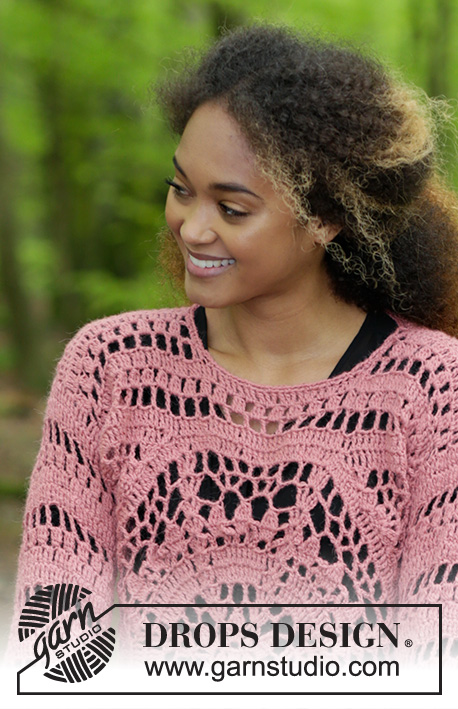
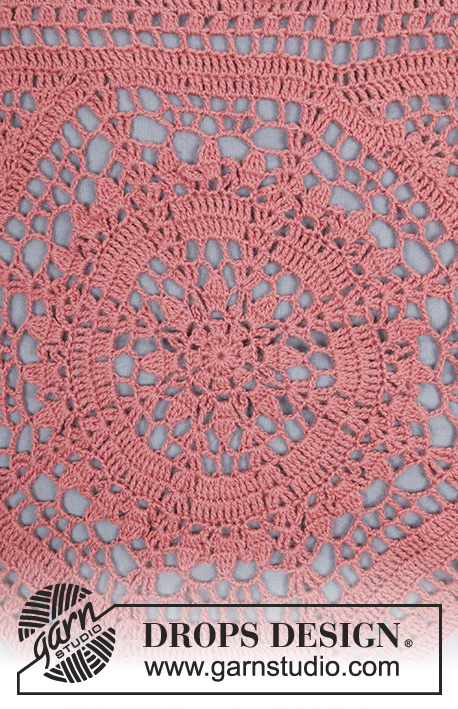


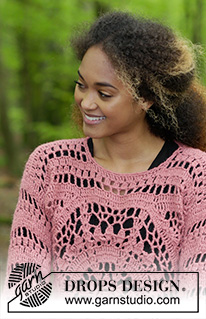


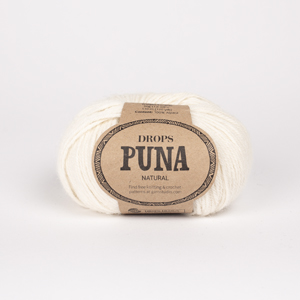


















































Comments / Questions (35)
Hola, no se cómo hacer la vuelta 5 de A.1, no entiendo qué hay que hacer en el símbolo del hexágono cuando dice 6 puntos de cadena, ¿me podéis ayudar? Gracias.
05.10.2023 - 20:59DROPS Design answered:
Hola Puri, el hexágono son 6 puntos de cadeneta. Por lo tanto, trabajas un arco de 6 cadenetas entre los 2 puntos bajos de los otros arcos.
09.10.2023 - 00:53Hej! Jag förstår inte hur jag ska virka diagram A.3. Var slutar det första varvet och var börjar varv nr 2? Tacksam för svar! Mvh Mikaela
04.08.2023 - 21:20DROPS Design answered:
Hej Mikaela, du starter i midten af diagrammet ved pilen med 1fm,3lm, 1fm, 4 lm, hæft med 1 km, næste række starter med 2 dobbeltst, 2 lm osv :)
10.08.2023 - 13:48Hi there, how do u work A4.a to 4.7 in pattern?
03.03.2022 - 00:09DROPS Design answered:
Dear Kenzie, depending on your size you will work A.4 to A.7 a different way - see written pattern. this lesson might help you to understand how to work these diagrams. Happy crocheting!
03.03.2022 - 10:18Grazie, ma non ho capito se devo iniziare diagramma A.4b dal vertice dell' angolo o dalla base dalla parte destra e poi salire e continuare sul lato con l'altro diagramma A.5 fino ad arrivare alla base dell' altro angolo del lato 8.
26.09.2021 - 21:14In che punto dell' angolo devo iniziare a lavorare? Non ho capito neanche quando devo iniziare a fare gli aumenti... Aiutoooo!
26.09.2021 - 18:14DROPS Design answered:
Buonasera Federica, deve lavorare gli angoli sui lati 2 e 8 seguendo i diagramma A.3. Buon lavoro!
26.09.2021 - 21:09Grazie mille, provo ad andare avanti....
16.08.2021 - 07:59Buongiorno, è la prima volta che lavoro con diagramma. non ho capito come si procede per l'angolo del diagramma A3. A.3. La prima riga inizi all’altezza della freccia – ogni riga è affrancata con 1 maglia passata nelle maglie lungo il lato-2 come mostrato nel diagramma Ho iniziato dove indica la freccia con una m.b.. , 3 cat, 1 mb Poi 4 cat, 1 m. bassissima e inizio il secondo giro. e' corretto? e quindi inizio con 2 m. doppie nell'arco di catenelle ecc. ecc..
15.08.2021 - 12:16DROPS Design answered:
Buonasera Federica, si, esatto deve procedere in quel modo. Abbiamo corretto il testo, ogni riga va affrancata con 1 maglia bassissima nelle maglie del lato 2. Buon lavoro!
15.08.2021 - 23:39Grazie
19.12.2020 - 18:49Hej Drops, jeg har prøvet flere gange men forstår ikke hvordan jeg skal lave indtagningerne til ærme - der står både jævnt fordelt og så 6 db.stangmasker x gange og 3 db.stangmasker x gange og det er her jeg ikke kan følge med - hvordan beregner jeg hvornår disse indtagninger skal gøres? Jeg har prøvet flere gange men kan ikke få det til at passe med 42 masker når jeg er færdig (ender altid med lidt flere) Hvad gør jeg forkert? Tak
29.10.2020 - 21:24DROPS Design answered:
Hej Rikke, jo du har 66 masker, tager 6 dbl.st ind jævnt fordelt hver gang du hækler første række i diagrammet 3 gange (ialt 18 indt) og så tager du ind (stadigvæk på første række i diagrammet) jævnt fordelt 3 dbl.st 2 gange (ialt 6 indt) 66-24= 42 dbl.st tilbage :)
04.11.2020 - 12:12Hej! Enl diagram A4b ska det vara tredubbelstolpar i hörnen på sida 1, men i texten på slutet av beskrivning av kant runt rutan står det att det ska vara dubbelstolpar i alla 6 hörn?
06.06.2019 - 17:32DROPS Design answered:
Hei Petra. Det stemmer at det i disse 2 hjørnene skal være trippelstaver (for at formen skal bli riktig mot skuldrene), så i teksten skulle det stått dobbelstaver/trippelstaver. Vi skal få lagt til dette slik at det ikke blir forvirring. God fornøyelse
07.06.2019 - 09:25